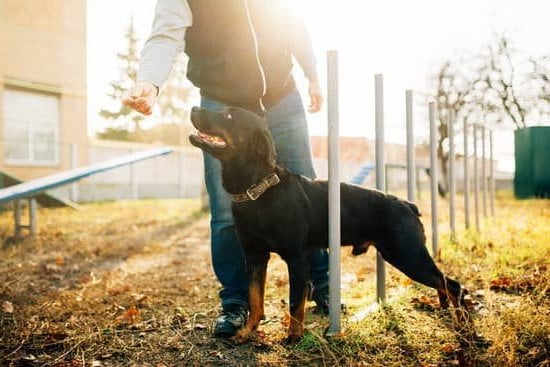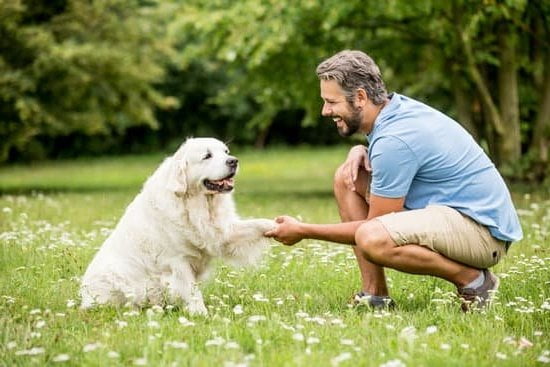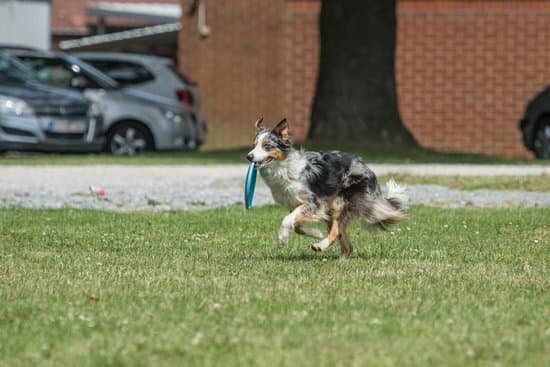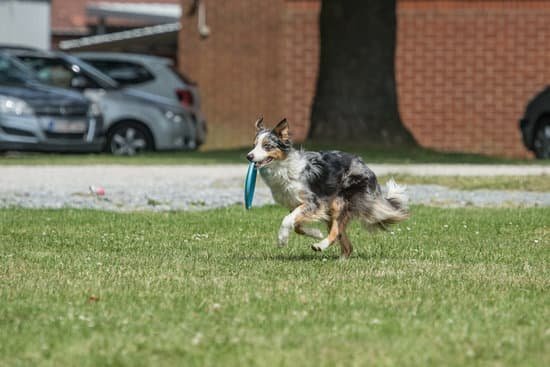Are you wondering how to train a dog as a service dog? Training a service dog is a rewarding and often challenging journey that requires patience, dedication, and understanding.
In this article, we will explore the various aspects of training a dog to become a service dog, from choosing the right breed to legal rights and responsibilities. Whether you are considering training your own service dog or seeking professional guidance, understanding the role of a service dog is crucial for success.
When it comes to training a service dog, it’s important to recognize their unique role in providing assistance and support to individuals with disabilities. From mobility assistance to emotional support, service dogs play an essential part in helping their owners navigate daily life. Understanding the specific needs and tasks required by individuals is key in preparing a dog for this important role.
In the following sections, we will delve into the process of choosing the right dog breed, laying the foundation for basic obedience training, focusing on specific tasks and skills, strengthening the bond between owner and dog, and navigating public access training. Additionally, we will discuss the legal rights and responsibilities associated with having a service dog, as well as advanced training for certification.
Stay tuned as we guide you through this fulfilling journey of training your beloved pet into an invaluable service companion.
Choosing the Right Dog
- Breed Selection: Certain breeds are known for their intelligence, trainability, and temperament, making them ideal candidates for service dog work. Breeds such as Labrador Retrievers, Golden Retrievers, German Shepherds, and Standard Poodles are popular choices due to their loyalty, adaptability, and willingness to please.
- Temperament and Personality Traits: When evaluating potential service dogs, it’s important to look for specific temperament and personality traits that are well-suited for service work. Service dogs should be calm, confident, friendly, and patient. They should also exhibit a strong desire to work and form close bonds with their handlers.
- Health and Physical Attributes: In addition to temperament, it’s crucial to consider the physical health and attributes of a potential service dog. Dogs selected for service work should be in good overall health with no major medical issues or physical limitations that would interfere with their ability to perform tasks.
By carefully considering these factors when choosing a potential service dog candidate, you can set the stage for a successful training journey. Remember that every dog is unique, so it’s essential to evaluate each individual based on their specific qualities and characteristics before embarking on the training process.
Basic Obedience Training
Once you have selected the right dog for service training, it is essential to lay the groundwork with basic obedience training. This foundation will be crucial for the success of your dog in performing specific tasks as a service dog. Basic obedience training includes teaching your dog commands such as sit, stay, down, come, and walking on a loose leash.
Consistency and positive reinforcement are key during this stage of training. Using treats, praise, and toys as rewards will encourage your dog to learn and obey commands. It is also important to keep training sessions short and frequent to prevent overwhelming your dog. Implementing a regular schedule will help your dog understand expectations and build trust with you as their handler.
Along with obedience commands, socialization is an integral part of basic training for a service dog. Exposing your dog to various environments, people, and other animals will help them become comfortable and confident in different situations. This exposure early on will set the stage for success in public access training later on in the process.
Specific Tasks and Skills
When training a dog to become a service dog, it is crucial to focus on the specific tasks and skills that will meet the individual needs of the handler. Each service dog is trained to provide assistance in various ways, depending on the handler’s unique needs. Some examples of specific tasks and skills include retrieving items, opening doors, alerting to medical conditions, and providing stability for individuals with mobility issues.
Assessing Individual Needs
Before beginning the training process, it is essential to assess the individual needs of the handler. This involves understanding their specific challenges and how a service dog can provide assistance.
For example, a person with diabetes may need a service dog trained to alert them when their blood sugar levels are too high or too low. By assessing these needs, trainers can tailor the training program to focus on teaching the dog the tasks and skills that will be most beneficial for the handler.
Task Training
Once the individual needs have been identified, the next step is to train the service dog to perform specific tasks. This may involve teaching the dog how to retrieve medication or alert for help in case of an emergency.
Task training requires consistent practice and positive reinforcement to ensure that the dog understands what is expected of them. It is important for trainers to be patient and understanding as they work with both the dog and their handler in mastering these critical tasks.
By focusing on specific tasks and skills tailored to meet individual needs, service dogs can make a significant impact on improving the quality of life for their handlers. Through careful assessment and targeted training, these incredible animals can provide invaluable support and assistance in various aspects of daily living.
Bonding and Communication
Building a strong bond with your service dog is crucial for a successful partnership. Effective communication and mutual trust are the foundations of this relationship. Spending quality time together, engaging in activities like playtime and grooming, and providing positive reinforcement during training sessions helps to strengthen the bond between you and your service dog.
Creating a consistent routine can also help improve communication with your service dog. Dogs thrive on structure, so establishing a predictable schedule for feeding, exercise, training, and rest can help reduce stress and confusion for your canine companion. This routine can also aid in developing clear communication cues between you and your service dog, making it easier to convey your needs and expectations.
Additionally, utilizing positive reinforcement techniques such as treats, praise, and toys can contribute to building a strong connection with your service dog. Rewarding desired behaviors reinforces the bond between you and your canine partner while also fostering a positive learning environment. By focusing on clear communication, consistency, routine, and positive reinforcement, you can establish a solid foundation for a rewarding relationship with your service dog.
| Bonding Tips | Benefits |
|---|---|
| Spending quality time together | Strengthens the bond |
| Establishing a consistent routine | Improves communication |
| Using positive reinforcement techniques | Fosters a positive learning environment |
Public Access Training
Understanding the Importance of Public Access Training
Public access training is a crucial aspect of preparing a dog to become a service dog. Unlike other types of pets, service dogs must be able to accompany their handlers into various public spaces and behave appropriately in these environments. This includes places such as restaurants, stores, hospitals, and public transportation. The goal of public access training is to ensure that the service dog can remain well-behaved and unobtrusive while providing assistance to its handler in different settings.
Exposing Your Dog to Different Environments
One important aspect of public access training is exposing your future service dog to different environments from an early age. This exposure helps the dog become familiar with various stimuli and allows them to practice good behavior in real-world situations. Gradually introducing the dog to different settings, noises, and distractions will help them remain calm and focused when they begin their official duties as a service dog.
Teaching Good Manners in Public
In addition to exposure, it’s essential to teach your service dog good manners in public places. This includes behaviors such as walking calmly on a leash, ignoring distractions, remaining quiet when needed, and not interacting with other people or animals without permission.
Teaching the dog how to behave well in public will ensure that they can assist their handler without causing disruptions or disturbances to others around them. Through consistent training and positive reinforcement, your future service dog can learn how to navigate various environments with grace and composure.
Legal Rights and Responsibilities
When training a dog to be a service dog, it’s important to understand the legal rights and responsibilities that come with having a service animal. Service dogs are not just pets; they are working animals that provide essential support to individuals with disabilities. As such, there are laws and regulations in place to protect the rights of both the handler and the service dog.
Here are some key legal rights and responsibilities to consider when training a dog to be a service dog:
1. Americans with Disabilities Act (ADA): Under the ADA, individuals with disabilities have the right to bring their service dogs into public spaces such as restaurants, stores, and other businesses. It’s important to understand the specific guidelines outlined in the ADA regarding service dogs and public access.
2. Housing Rights: The Fair Housing Act (FHA) allows individuals with disabilities to have emotional support animals or service animals in housing units that have a “no pets” policy. Understanding the specific requirements for housing accommodations for service dogs is essential for handlers.
3. Training Requirements: While there are no specific training requirements set by federal law for service dogs, they must be trained to perform tasks that directly mitigate their handler’s disability. It is important for service dogs to behave well in various environments and follow commands from their handlers.
It is crucial to be well-versed in these laws and regulations when training a dog to be a service dog. Not only does this ensure that both you and your service dog are protected under the law, but it also helps promote awareness and understanding of the important role that service animals play in the lives of individuals with disabilities.
Advanced Training
Once your service dog has mastered basic obedience training and specific tasks and skills, it’s time to take their training to the next level for certification. Advanced training is crucial to ensure that your service dog can perform their duties reliably and with precision. This stage of training focuses on fine-tuning the dog’s abilities and preparing them for real-life situations where they will need to assist their handler.
Advanced training for service dog certification involves honing the dog’s ability to perform complex tasks such as guiding a visually impaired person, alerting to medical conditions, or providing assistance to individuals with mobility issues. This may also include refining their behavior in various environments and teaching them how to remain calm and focused even in distracting situations.
In addition to practical skills, advanced training also emphasizes promoting the emotional well-being of the service dog. This includes ensuring that the dog remains calm and confident in any situation, as well as being able to handle stress or unexpected changes in their environment. Building a strong bond with your service dog during this phase of training is essential, as it will contribute to their overall success as a certified service animal.
| Service Dog Skills | Training Methods |
|---|---|
| Complex task performance (medical alerts, guiding) | Positive reinforcement, repetition, patience |
| Behavior in various environments | Gradual exposure, desensitization techniques |
| Emotional well-being | Bonding activities, stress management exercises |
Conclusion
In conclusion, the process of training a dog to be a service dog is not only challenging but also incredibly rewarding. It requires dedication, time, and patience, but the bond that is formed between the dog and their handler is truly special. Through choosing the right dog, providing basic obedience training, honing specific skills, and navigating public access regulations, both the dog and handler are able to work together to make a positive impact on someone’s life.
Furthermore, as you embark on this journey, it’s important to remember the legal rights and responsibilities that come with having a service dog. Understanding the laws and regulations for service dogs will ensure that you and your canine companion are able to navigate various environments with confidence. By following these guidelines, you can help promote awareness and respect for service dogs in society.
Ultimately, training a dog to be a service animal is not just about teaching them tasks – it’s about building a strong relationship based on trust, communication, and understanding. The journey of training your dog to be a service dog is one filled with challenges and triumphs, but in the end, knowing that your efforts are making a positive impact on someone’s life makes it all worth it.
Frequently Asked Questions
How Do I Teach My Dog to Be a Service Dog?
Teaching your dog to be a service dog requires extensive training and preparation. It’s important to start with basic obedience training and then move on to more specific tasks related to the individual’s needs.
Service dogs need to be well-behaved, calm in different environments, and able to perform specific tasks reliably. Seeking guidance from a professional trainer or service dog organization is essential for proper training and certification.
What’s the Difference Between a Support Dog and a Service Dog?
The main difference between a support dog and a service dog lies in their specific roles and legal protections. A service dog is specifically trained to perform tasks that assist an individual with a disability, while a support or emotional support dog provides comfort, companionship, and emotional support without requiring specific training.
Additionally, service dogs have broader access rights under the Americans with Disabilities Act (ADA) compared to emotional support animals.
What Do Service Dogs Do for Anxiety?
Service dogs can provide valuable support for individuals dealing with anxiety by performing various tasks that help mitigate their symptoms. These tasks may include creating physical barriers between the individual and others in crowded spaces, applying pressure therapy during panic attacks, providing tactile stimulation to interrupt anxiety-inducing behaviors, finding an exit in case of a panic attack, or simply offering emotional comfort and reassurance.
The presence of a well-trained service dog can also help reduce overall anxiety levels in certain situations.

Welcome to the blog! I am a professional dog trainer and have been working with dogs for many years. In this blog, I will be discussing various topics related to dog training, including tips, tricks, and advice. I hope you find this information helpful and informative. Thanks for reading!





